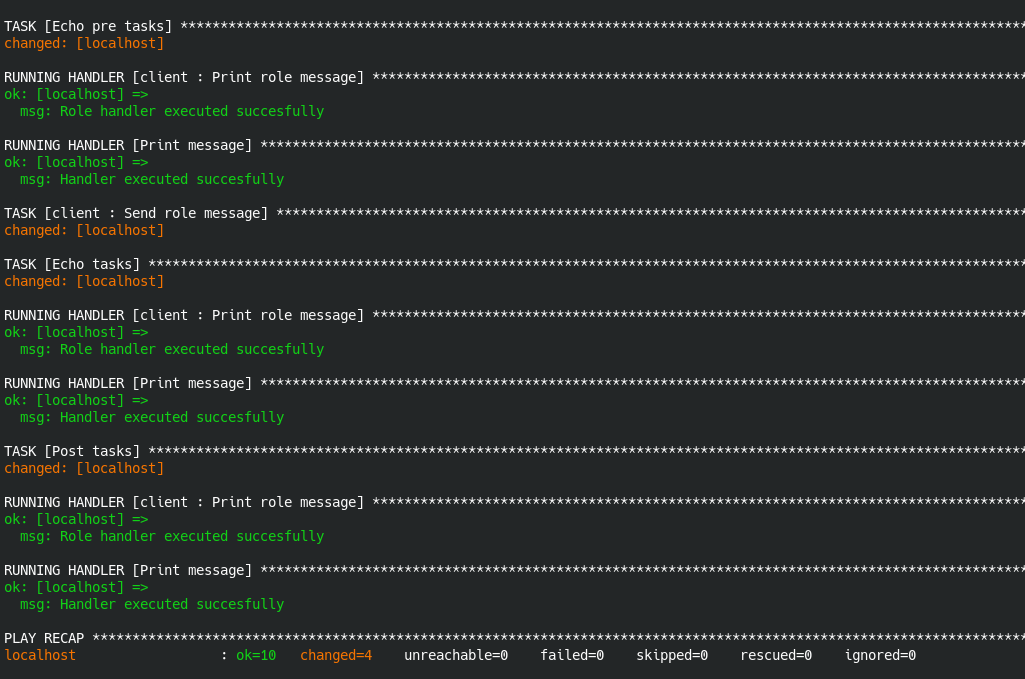Definition
Why do we need pre_tasks, tasks, roles, post_tasks in Ansible?
In general, the order of execution will always be as follows:
1) pre_tasks -> 2) roles -> 3) tasks -> 4) post_tasks
Main differences:
pre_tasksandpost_tasksare needed to be used together with therolesdirective to execute tasks before or after a rolerolesandtasksshare the same space and should not be used in the same play according to ansible best-practice
However, there is another important feature when working with handlers — within one play it can be called up to 3 times:
- in a
pre_tasks - in a
roles/tasks(when used together, handler will be called at the end of tasks once) - in a
post_tasks
Also, it is important to note here that in pre_tasks and post_tasks you can call handlers from a role and it, according to the rule above, can be executed up to 3 times
Practice
Let’s write a simple playbook, role and config with the following structure:
├── ansible.cfg
├── roles
│ └── client
│ ├── handlers
│ │ └── main.yml
│ └── tasks
│ └── main.yml
└── test.yml
Content of ansible.cfg:
[defaults]
roles_path = roles
stdout_callback = yaml
Content of roles/client/handlers/main.yml:
---
- name: Print role message
ansible.builtin.debug:
msg: Role handler executed succesfully
Content of roles/client/tasks/main.yml:
---
- name: Send role message
ansible.builtin.command: /bin/true
notify:
- Print message
- Print role message
Content of test.yml
---
- name: Testing handlers
hosts: localhost
gather_facts: false
handlers:
- name: Print message
ansible.builtin.debug:
msg: Handler executed succesfully
pre_tasks:
- name: Echo pre tasks
ansible.builtin.command: /bin/true
notify:
- Print message
- Print role message
roles:
- client
tasks:
- name: Echo tasks
ansible.builtin.command: /bin/true
notify:
- Print message
- Print role message
post_tasks:
- name: Post tasks
ansible.builtin.command: /bin/true
notify:
- Print message
- Print role message
Result of running ansible-playbook test.yml:
